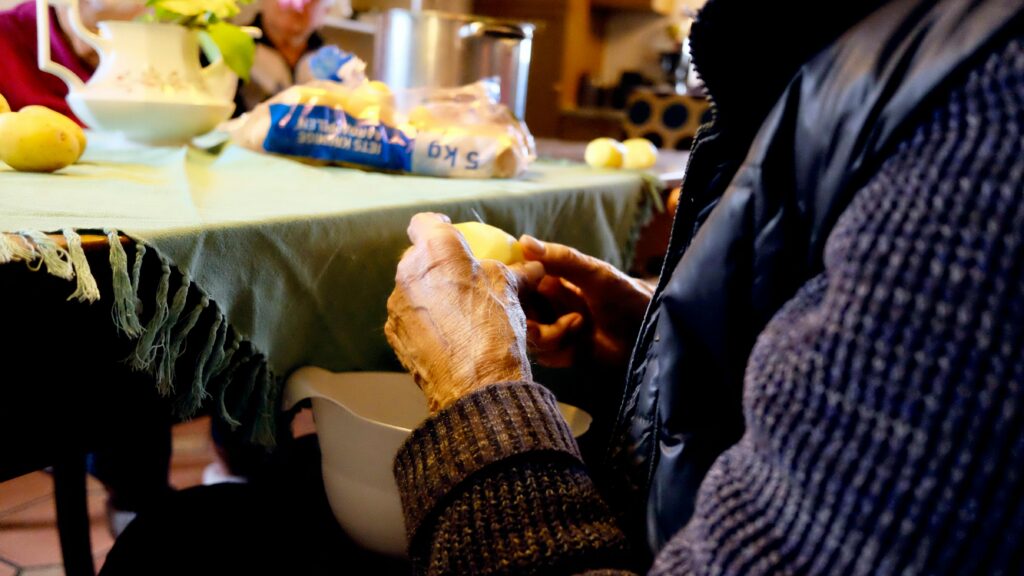
Longevity, the pursuit of a lengthy and healthy life, has captivated human interest for centuries. With advancements in science and medicine, understanding the factors that contribute to a longer life has become an increasingly important area of study. One fascinating approach to uncovering the secrets of longevity involves examining populations known for their exceptional life expectancy. Among these, the Blue Zones stand out as prime examples.
The term “Blue Zones” was coined by National Geographic Fellow Dan Buettner, who identified five regions around the world where people live significantly longer, healthier lives. These regions include Okinawa in Japan, Sardinia in Italy, Nicoya in Costa Rica, Icaria in Greece, and Loma Linda in California, USA. The inhabitants of these areas not only boast impressive lifespans but also enjoy a high quality of life well into their advanced years.
Each Blue Zone offers unique insights into the lifestyle choices and environmental factors that contribute to longevity. Despite varying cultural backgrounds, these regions share several commonalities that promote extended lifespans. The study of Blue Zones provides a valuable framework for understanding the habits and practices that can potentially lead to a longer, healthier life.
This blog post will delve into the specific habits and lifestyle choices prevalent in Blue Zones that contribute to their remarkable longevity. By exploring these practices, we aim to uncover actionable insights that individuals can incorporate into their own lives. From dietary habits to social connections, the secrets to longevity are multifaceted and deeply rooted in the daily lives of Blue Zone inhabitants.
Diet and Nutrition: Eating for a Long Life
The dietary habits of the world’s longest-living people reveal a strong emphasis on a plant-based diet, the consumption of whole foods, and the importance of moderation. In regions known as Blue Zones, where people commonly live to very old ages, diets are rich in legumes, whole grains, nuts, and vegetables. These foods provide essential nutrients and antioxidants that contribute to overall health and longevity.
One of the key elements observed in these diets is the prevalence of plant-based foods. Vegetables, fruits, beans, and nuts form the cornerstone of meals, offering a plethora of vitamins, minerals, and fiber. Whole grains such as brown rice, quinoa, and oats are also staples, providing complex carbohydrates that are digested slowly, thereby maintaining stable blood sugar levels and prolonged energy.
Moderation is another critical factor in the dietary practices of long-lived populations. In Okinawa, Japan, the cultural practice of “Hara Hachi Bu” encourages individuals to stop eating when they are 80% full. This practice helps prevent overeating and maintains a healthy weight. Similarly, meals are often smaller and more frequent, which aids in better digestion and nutrient absorption.
While plant-based foods dominate the diets of these communities, the consumption of meat and fish is not entirely absent but is notably moderate. Meat is typically eaten in small portions and on rare occasions, while fish is consumed more frequently but still in moderation. This balanced approach ensures that the diet remains rich in essential omega-3 fatty acids and proteins without the risks associated with high meat consumption.
The moderate use of alcohol, particularly wine, is another characteristic of these diets. In Sardinia, Italy, and Ikaria, Greece, moderate wine consumption is common and often enjoyed during meals. This practice is believed to enhance the absorption of antioxidants found in food and promote cardiovascular health.
Overall, the dietary habits of the world’s longest-living people highlight the importance of a plant-based diet, whole foods, and moderation. By incorporating these principles, individuals may improve their chances of achieving a long and healthy life.
Physical Activity: Moving Naturally Throughout the Day
The world’s longest-living populations often attribute their longevity to a lifestyle that integrates regular physical activity into daily routines. Unlike the structured exercise regimens prevalent in modern societies, these communities engage in natural physical activities such as walking, gardening, and manual labor. These activities not only contribute to cardiovascular health and muscle strength but also promote mental well-being, creating a holistic approach to health.
In regions recognized as Blue Zones, such as Okinawa in Japan and Sardinia in Italy, physical activity is seamlessly woven into the fabric of daily life. In Okinawa, for instance, elders frequently practice traditional gardening, which requires bending, lifting, and stretching. This not only enhances their physical fitness but also provides a sense of purpose and connection to nature. Similarly, in Sardinia, walking is a common mode of transportation, and many residents engage in farming activities, ensuring that they remain active throughout their lives.
These examples illustrate the concept of ‘moving naturally,’ where physical activity is not a separate, scheduled event but a continuous, integrated part of daily living. This approach contrasts sharply with the sedentary lifestyles common in modern societies, where prolonged sitting and minimal movement are prevalent. By incorporating movement into daily tasks, the longest-living people maintain a level of physical activity that supports heart health, builds strength, and enhances mental clarity.
The benefits of such natural physical activity are manifold. Walking, for example, improves cardiovascular health by increasing heart rate and circulation. Gardening helps maintain muscle tone and flexibility, while manual labor can build endurance and strength. Moreover, these activities often involve social interaction, which is crucial for mental health and emotional well-being.
In essence, the secret to longevity in these communities lies in their ability to move naturally throughout the day. By integrating physical activity into daily routines, they achieve a balanced, healthy lifestyle that supports both physical and mental health. This serves as a valuable lesson for modern societies, emphasizing the importance of staying active in a natural, unforced manner.
Social Connections and Mental Well-being
Social connections and mental well-being play a pivotal role in achieving longevity, as evidenced by the habits of the world’s longest-living populations. Strong family ties and community engagement are fundamental aspects that significantly contribute to a longer life. In regions known for their high life expectancy, such as Okinawa, Japan, and Loma Linda, California, the presence of supportive social networks is a common thread.
One notable practice in Okinawa is the ‘moai,’ a lifelong social support group that provides emotional and practical assistance. This tradition fosters a sense of belonging and mutual care, contributing to lower stress levels and enhanced mental health. Similarly, in Loma Linda, the community’s emphasis on faith and regular social interactions within their congregations reinforces a strong mental and emotional support system. These social structures are crucial in promoting a sense of purpose and community, both of which are essential for mental well-being.
Reducing stress through daily routines is another crucial aspect observed among the longest-living populations. Practices such as taking time to downshift, relax, and engage in mindfulness activities help mitigate chronic stress. For instance, regular moments of prayer, meditation, or simply spending time in nature are common practices in these regions. Such routines not only enhance mental health but also contribute to physiological benefits, including lower blood pressure and reduced risk of chronic diseases.
The interplay between social connections and mental well-being significantly impacts longevity. Strong relationships and community ties provide a support system that helps individuals navigate life’s challenges, reducing the psychological burden and fostering a healthier, longer life. Thus, cultivating robust social networks and prioritizing mental health are essential strategies for those seeking to enhance their longevity.







